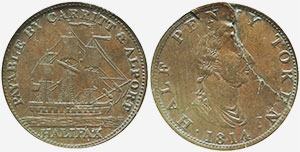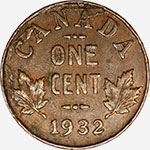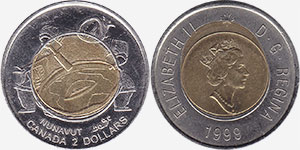Planchet flaw - Errors and varieties
This error can be caused by several factors related to the planchet including:
- Contaminants (like carbon debris from melting) trapped within the planchet that cause the metal to separate along the horizontal plane.
- Gas (air, oxide or other) and gas bubbles. Compressed gases can rise in temperature dramatically. In a specific form and when the air is trapped in the metal, it is called a dot error.
Here are some categories of manifestation of lamination and planchet flaw errors on Canadian coins.
Lamination
When flakes of metal are peeled off the surface of the coin. The peeling can occure before or after the strike.
Lamination cracks
Not to be confused with die crack, this is one of the most common planchet flaw error. The skin or peel is still mostly covering and attached to the coin.
Some laminations are called clamshell because of the look and separation on the edge of the coin.
Retained lamination
When the metal flakes remains retained on the surface of a coin or planchet.
Split planchets
When a planchet is completly missing a large part of it on the horizontal axis. May happens before or after strike. A split planchet will always weigh less than a normal planchet. Split planchets after strike are often confused with full brockage.
Cracked planchets
A planchet that developed a crack prior to, or after the strike.
Uncentered (off center) core
On 2 dollars coins only.
Other types of planchet flaw:
- Blow holes. Very rare on Canadian coins. Occurs when the metal strip is rolled out. The stress caused by this operation can create a beveled hole.
- Rolled-thick or thin planchet causing a large difference of coin weight. Not to be confused with a weak strike. Tapered planchets also exist. They thins out at one pole due to a mishap in the rolling mill.
Planchet flaw values
The value is based on the visual appeal of the error. Most planchet flaw errors aren't worth much or reduce the value of a coin.
More examples of planchet flaw errors










